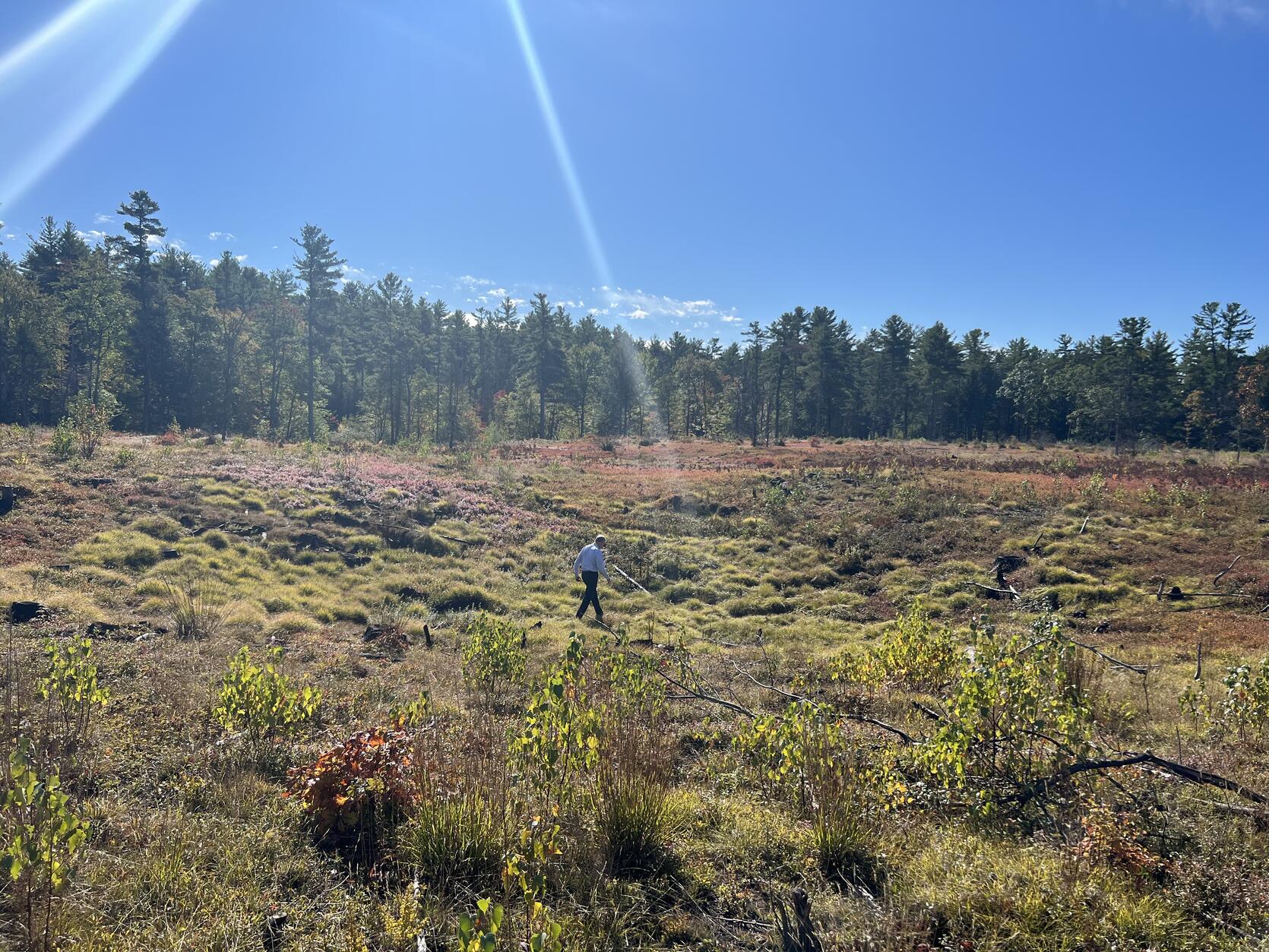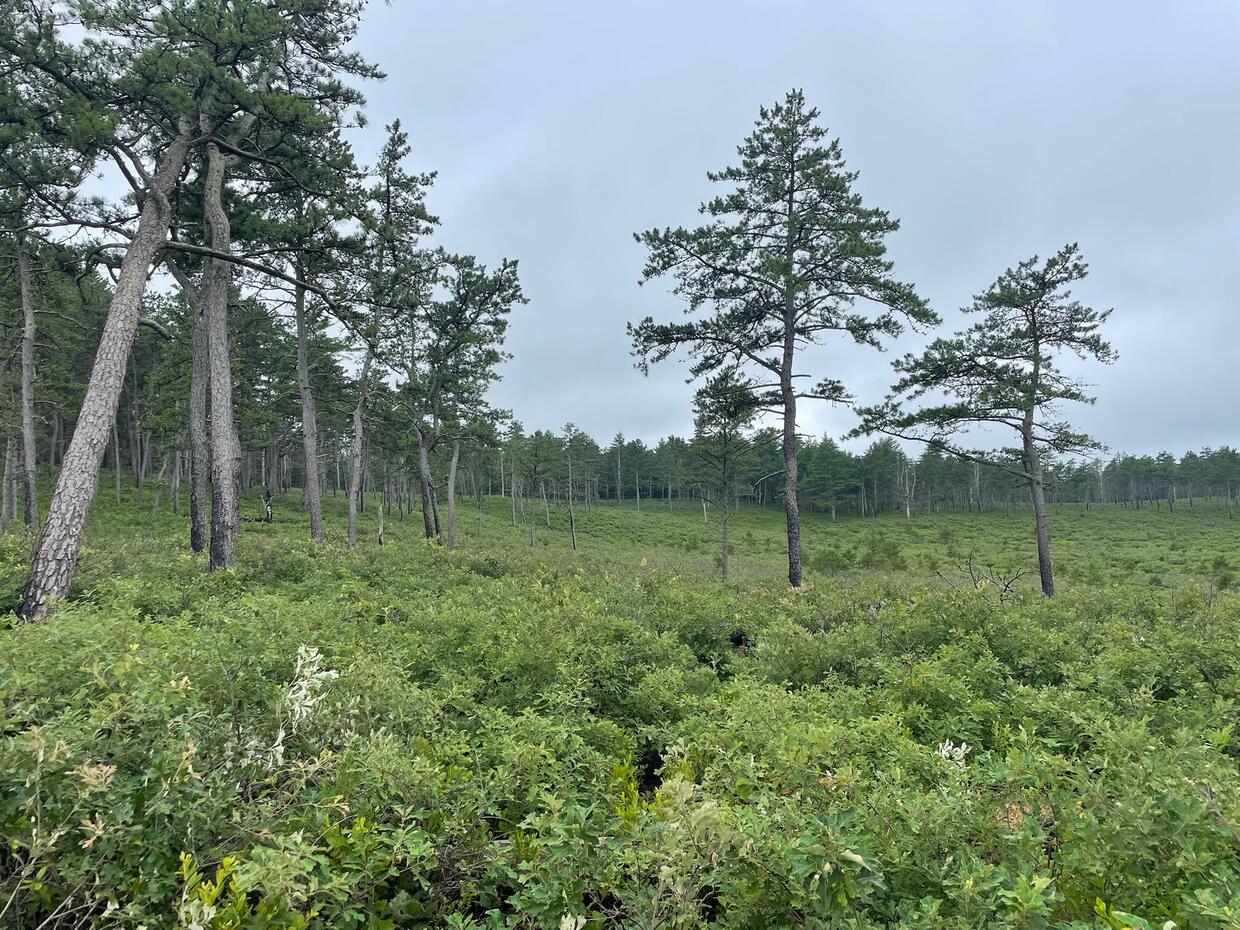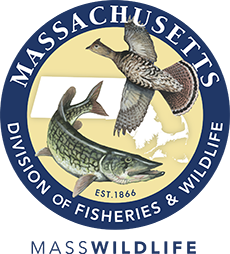- Division of Fisheries and Wildlife
- MassWildlife's Natural Heritage & Endangered Species Program
Media Contact
Media Contact, MassWildlife

Hidden in plain sight within the rugged, dry barrens habitat of New England are unique landscape features known as frost bottoms. These “microhabitats” occur where just the right combination of sandy soil, topography, and vegetation allows cold air to collect and linger—often staying chilly or even freezing in late spring or early fall. Temperatures may fluctuate as much as 60° F in a single day, and growing seasons are shorter than the surrounding landscape. But in the summer, these globally rare places are full of wildlife activity.
Formed by melting glaciers 12,000 years ago, frost bottoms (also called frost pockets) are kettle hole depressions or small valleys that are 20 or more feet lower than the surrounding land. Picture standing in a large bowl-shaped area with a lot of scrub oak, lowbush blueberry, bracken fern, and unusual herbaceous plants such as wood lily, as well as scattered pitch pine trees. That is a frost bottom!
Year round, frost bottoms become chilly and foggy in the evening. Because hot air rises and cool air settles, this particular microhabitat is maintained in part by an open tree canopy. Habitats with closed canopies, like hardwood and pine forests, trap heat and have less variable temperature. In a frost bottom, the shorter growing season slows the growth of trees and can even exclude them entirely.
Wetland habitats may occur in natural depressions, but most frost bottoms do not retain water. Deep, sandy soils drain efficiently even during heavy rains. This combination of localized, cool temperatures and dry, sandy soils supports the growth of specialized barrens plants.
Scrub oak responds to frost in a specific way that benefits many species of moths, including rare species such as the buck moth and the Herodias underwing moth. Frost can kill new spring growth of scrub oak, resulting in resprout of fresh foliage for moth caterpillars to eat. The fresh leaves are high in nitrogen, therefore more nutritious for the caterpillars, and low in tannins compared to older leaves, making them more palatable. Caterpillars also need warm temperatures to grow, so fresh foliage in the warmer days of late spring is an ideal combination.
While many people may not have a deep appreciation for moths or scrub oak, maintaining their populations is crucial for the survival of other wildlife. A variety of birds and bats, like the whip-poor-will and the big brown bat, frequent these open areas to hunt and feed on moths. The eastern towhee feasts on fruits, seeds, and insects on the ground, and the prairie warbler nests in the shrubs. Moths are also pollinators! Lowbush blueberry, bearberry, teaberry, native bush clovers, wild indigo, and many others rely on moths, butterflies, and native bees to spread their pollen. In fact, frost bottoms are ideal places for both wildlife and people to forage for blueberries and huckleberries.
Foraging is not the only benefit people receive from frost bottoms. The deep and highly permeable sands beneath frost bottoms filter and hold water from rainfall and snowmelt, protecting critical groundwater aquifers.
On MassWildlife properties, staff take action to restore these special habitats to benefit native wildlife. Dry barrens and frost bottom habitats require an open canopy and periodic disturbance to stay healthy. Habitat specialists plan and conduct selective tree removal and/or prescribed burns to keep these habitats thriving.
Learn more about MassWildlife’s habitat management work.




